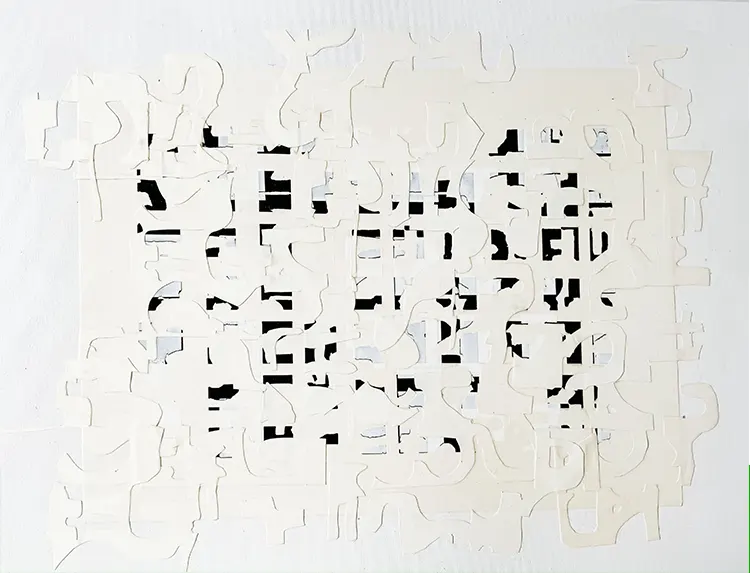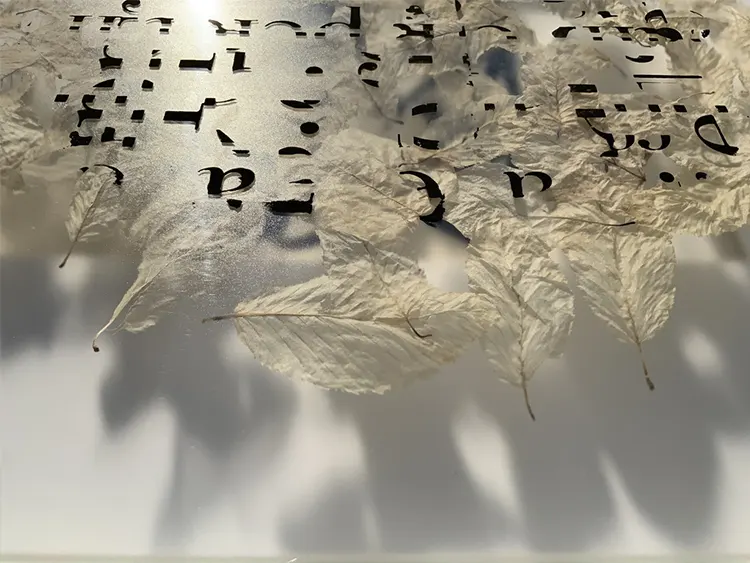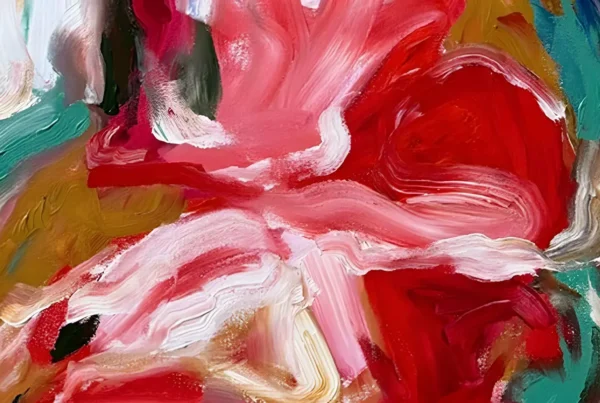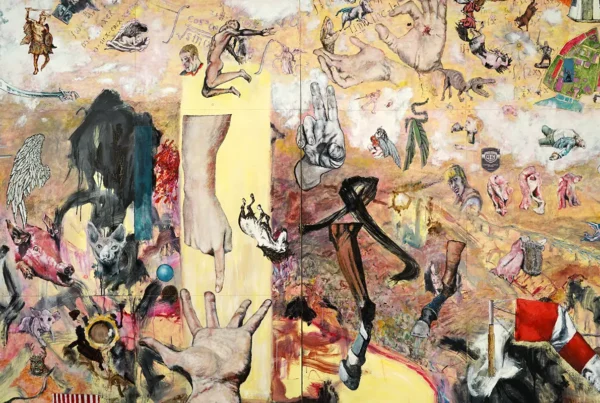“I prefer the challenge, so I pushed myself more and more into the paths of philosophy approach!”
Alexandra Winterberg: From Hamburg to the International Stage
The artistic journey of Alexandra Winterberg is as diverse and vibrant as the cultures that have shaped her. Born in Hamburg, Germany, Alexandra was the youngest of four daughters in a family where global awareness and cultural appreciation were daily norms. Her father, a seasoned traveler, imbued her with a fascination for the wider world, enriching her early years with stories and artifacts from distant lands. This exposure to a variety of cultures laid the foundation for her global artistic perspective. Meanwhile, her mother’s passion for literature and the arts fostered Winterberg’s early creative inclinations.
In her father’s expansive private craft-studio, Alexandra’s upbringing was a unique blend of artistic nurture and practical skill-building. She learned the value of hands-on experience, a skill that would later influence her approach to art. Discussions in the Winterberg household often revolved around logic and critical analysis, instilling in her a methodical approach to problem-solving. Her aunt, an accomplished painter, further sharpened her eye for detail, teaching her to appreciate the nuances of visual expression. Winterberg’s academic pursuits in interior design and architecture at universities in Rosenheim and Hamburg marked the beginning of her formal artistic training, setting the stage for a rich, multifaceted career.

Alexandra Winterberg: A Journey through Learning and Experimentation
The transformative phase of Alexandra’s artistic development began at the Savannah College of Art and Design (SCAD) in Georgia, USA, where she was deeply influenced by Professor Meier. Here, she delved deep into classical painting, a discipline that significantly shaped her artistic voice. This period was marked by a residency at the prestigious Kunstakademie under the guidance of Xenia Hausner in Hohe Festung Salzburg, Austria, a mentorship that would leave a lasting imprint on her work. Further enriching her experience were residencies at Cogalleries Fahrgem. Haubrock in Berlin and the Kunstverein in Wasserburg, among others.
Her career, punctuated by notable solo exhibitions such as “Dia-logos” during her art residency in Berlin, “trasparenze” – the CCBA7-winning solo show at Openart Milan, and “D-placement” at Espace Kugler Geneva, is a testament to her global influences and introspective nature. Winterberg’s participation in group exhibitions allowed her to explore diverse themes, with her works being displayed in Geneva, Paris, Italy, Norway, and beyond. The global reach of her art, showcased at events such as “Bridging the Gap” under the wings of Christie’s Hamburg and charity events, underscores her ability to engage with a wide, international audience. During the first pandemic lockdown, Alexandra turned her focus to socially-conscious art projects like “The Smile,” using her art to comment on societal issues and foster connections, further solidifying her position in the contemporary art world.

Alexandra Winterberg: The Philosophical Turn in Art and Design
The influence of Professor Meier from SCAD (Savannah College of Art and Design) on Alexandra Winterberg marked a pivotal shift in her creative journey. This transformative mentorship transformed her approach to both architecture and painting. Under his tutelage, Winterberg’s architectural designs evolved, becoming increasingly imaginative and intensive. This period marked a deep engagement with her work, where she transcended mere functionality. Her designs began embodying a philosophical depth, pushing the boundaries of traditional architecture. This phase of intellectual and creative ferment saw Alexandra embracing pictural philosophy, pushing herself into more challenging and profound realms of artistic expression.
Winterberg’s fascination with conceptual art grew during this time, inspired by the works of notable artists. Joseph Beuys’ approach to conceptual work opened new avenues for her, allowing a more nuanced engagement with art’s thematic and symbolic potential. The technical mastery of Joseph Albers in color theory expanded her visual language, enabling exploration of new dimensions in color space. The courage and audacity of Tracey Emin, coupled with Jonas Burgert’s skill in visually and verbally expressing the psychological depths of his works, provided further inspiration. This period was characterized by deep introspection and a questioning attitude, where Alexandra found herself increasingly drawn to examining and interpreting her observations through her art.

Alexandra Winterberg: A Synthesis of Techniques and Media
Alexandra Winterberg’s artistic expression is deeply rooted in conceptualism, where each piece begins with a question, leading her to the most expressive technique suited to its exploration. Her life experiences, especially her extensive travels and adaptation to new languages and cultures, have honed her ability to observe people and their environments closely, profoundly influencing her art. Winterberg’s fascination with dialects, characters, and drawing rhythms has led her to create a unique artistic space that exists in the interstices of various cultural elements. Her work often plays with new forms of hieroglyphs, synthesizing existing alphabets and emojis into a novel visual language.
Winterberg’s versatility as an artist is evident in her adept use of a wide range of techniques and mediums. From lithography and series photography to classic oil painting, cyanotypy, and drawing, she navigates effortlessly between two-dimensional and three-dimensional forms of expression. This versatility not only reflects her independence and inventiveness but also her organizational skills in managing various mediums and tools. Viewing distractions as opportunities for fresh perspectives, she maintains a dynamic and innovative approach to her creative process. Her next project, involving working with Braille and exploring auditory elements, underscores her commitment to pushing artistic boundaries and her endless quest for exploring new ways of communication and expression.






